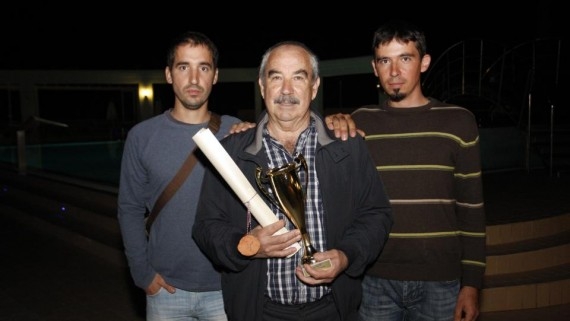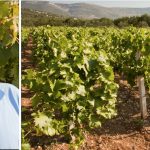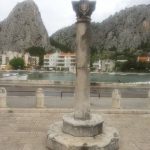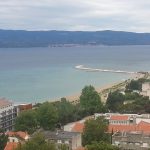Former shipbuilder Ivica Milan, today a wine grower and winemaker on the slopes of Kozjak mountain, recalls his work in the Radež shipyard in Blato on Korčula island in 1993. Then he met many residents of Čara and Smokvica villages and through them – Pošip. This “Korčula connection” makes Ivica believe shipbuilding and winemaking are destined to eternal cohabitation. Ivica shows by example it is so, as despite surgery on both hips, he doesn’t cease working in the vineyard which he constantly expands with new vines. Furthermore, when receiving a champion title at a festivity of Kaštela winemakers, he admitted it was his Pošip, which he is so proud of, that gave him “new strength,” while “olive oil greased my new hips.”
“When I was introduced to Pošip on Korčula, I knew after the first few sips that I would upon my return to Donja Kaštela bring with me vines of that variety. I believed that Pošip, which was then grown only on Korčula, can yield equal, if not better results in my vineyards on mildly terraced slopes of Kozjak. At the time, winter of 1993, I had a small vineyard with 610 wild vines and for a while had been wondering what to plant there. We used to have in Kaštela Crljenak (Zinfandel) and Plavac Mali and Babić and a hundred other red varieties, but I was intrigued by this Pošip. My stay on Korčula was crucial in choosing to plant Pošip. I did not doubt the position of Kaštela and would not even think that Korčula, Pelješac or Hvar had any better positions than my own vineyard. I now have around 3.000 vines and that speaks enough of my conviction,” remembers Ivica the beginnings of his wine story.
Ivica Milan considers planting Pošip on the slopes of Kozjak a pioneer undertaking and the numerous awards for his Pošip wines, with champion titles at large competitions, are proof to those who had doubts that the future of Kaštela vineyards is not only in red varieties, but also in Pošip!
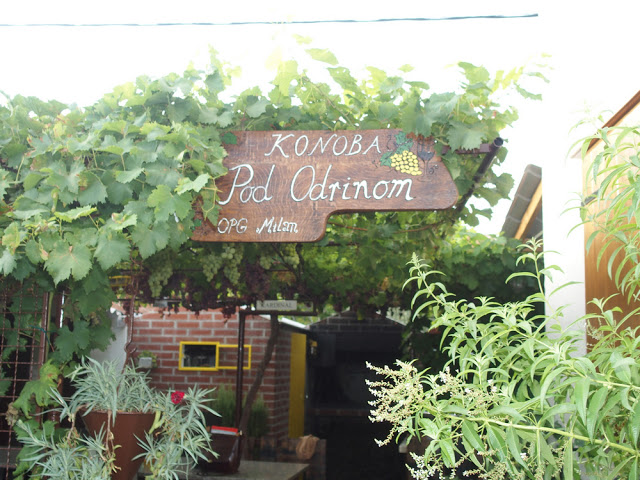
“I usually overanalyse everything, analysis is very important to me and analytics was my forte throughout education and the best part of mathematics. If one cannot analyse what you learn in schools, then they are lost as a person! So, I believed in myself and what I did and never did I come close to a situation to be disheartened and give up on Pošip in Kaštela.”
Ivica is convinced that in all of Dalmatia “there no better vineyard positions than in Kaštela.”
“My saviour is the soil highly rich in potassium. Each of my vines has 1.3 square metres of useful soil and hence plenty of food, the veins can do good work and I cannot have irrigation. Never buy grapes or wine from a vineyard that needs irrigation,” says Ivica adding his Pošip story is in fact “a story for the Gods, a treat which cannot be told in half an hour.”
According to Ivica, “deciding to work with white wines in Kaštela is like entering a box full of nails – you just don’t know from where the pain is coming.” However, listening to his life philosophy, planting Pošip was just what Ivica Milan is – a character consistent with his visions.
“The idea of planting Pošip came by following my life motto which boils down to never taking the road everyone takes. The famous quote by Jure Franičević Pločar is: ‘If you seek a path, never take the same roads but look for new ones – leave a mark!’ I go where no one else will. While everyone else planted red varieties, I decided on Pošip.
Not only did he surprise everyone by choosing the variety he has been involved with every day for the last 23 years, but he truly shocked the local wine world by planting the Pošip as a live fence!
“My vineyards are the only ones in Dalmatia with vines as a live fence, as I saw the benefits. My vineyards are closed and overshadowed at two metres high, I practically pass through them as in a tunnel. This choice left a mark. When asking for advice, none of the experts could help me, I had to find my own answers: the live fence is on the labels of my bottles.”
So in moments of inspiration Ivica likes to say he is the – emperor in the vineyard!
“The live fence saves the variety from harsh sunlight and exposure of the grapes to sun around St. John’s day, when the grapes are not yet hard and begin to shrivel… At first I thought it happens due to improper treatment with protective materials. Not even close! I analysed everything and realised the ones that shrivel are only the outer grapes exposed to the sun, which then dry up. However, the inner grapes are completely healthy!”
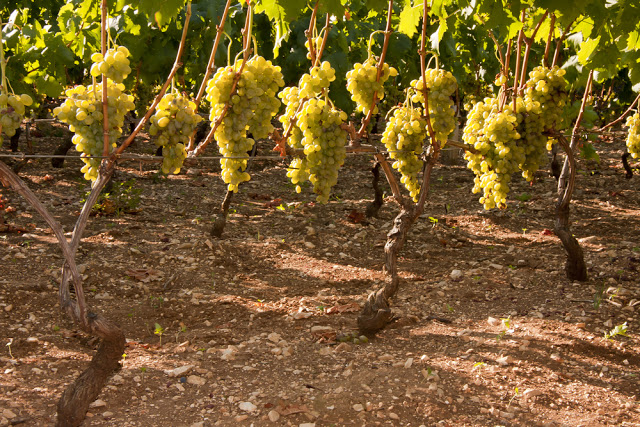
The vines from Čara were given to Ivica Milan by his friend Sveto Laus. When he saw the wonderful nectar that comes from the Pošip in his vineyards, he decided to dedicate a harvest to St. Laus from Čara and name one of the harvests – St. Pošip!
“I have been on the market for the last six years and one year I wanted to actually name a Pošip St. Pošip and honour the man without whom my Pošip story would not exist. But Sveto, flattered by my words, told me then: “Don’t do it Ive, I have plenty of problems as is with my cooperative members from Čara! They tell me it is my fault I gave you the vines!” So, they consider I created a disturbance on the market. I can’t think of a better praise for my Pošip than their reaction!”
Ivica considers his Pošip superior to most Pošip’s on the Croatian market, while “in the ring it can take on Grgić, Korta Katarina and Luka Krajančić!“
“But, they can never tell the story I can for lovers of my Pošip. In the area from Primošten to Omiš I made a deal with restaurant, bar and hotel owners during the Assumption of Mary to deliver a basket of Pošip grapes to all who order my wine. Let the guests who love my Pošip wine see where the wine they are drinking came from! Pošip as a grape ahead of the harvest has fantastic taste, with huge sweetness.”
Grace to his enormous effort and, as he likes to say, patience, Ivica made Pošip a recognisable variety in Kaštela. Others have recognised it and awarded Ivica at the Sabatina 2015 in Tučepi with the title “model wine grower.”
He naturally smiles at all the awards. And continues to walk uncharted paths. Of course, leaving a large footprint in Dalmatian wine growing and winemaking.
For the original and more from Vinske Priče blog on wine, click here.

